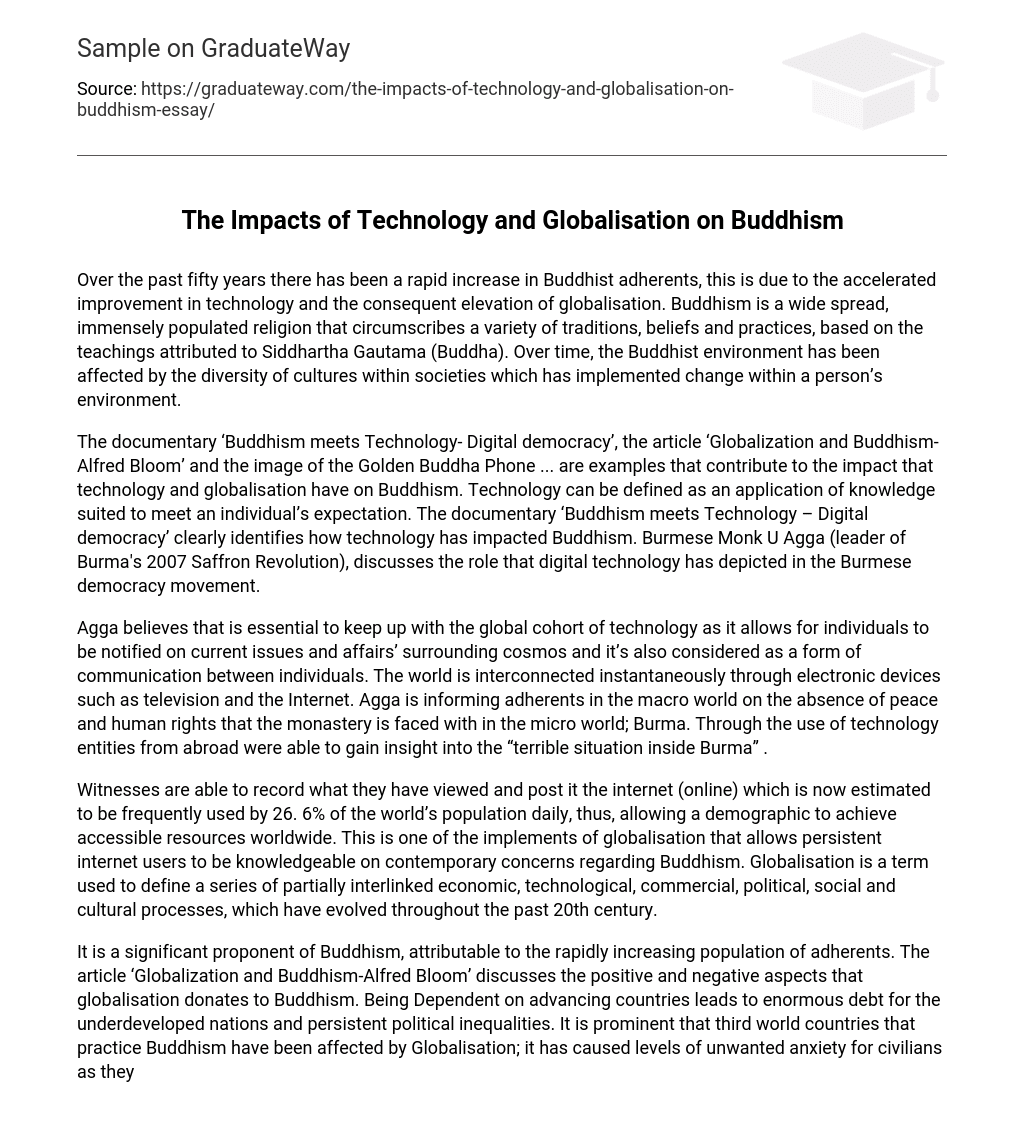Over the past fifty years there has been a rapid increase in Buddhist adherents, this is due to the accelerated improvement in technology and the consequent elevation of globalisation. Buddhism is a wide spread, immensely populated religion that circumscribes a variety of traditions, beliefs and practices, based on the teachings attributed to Siddhartha Gautama (Buddha). Over time, the Buddhist environment has been affected by the diversity of cultures within societies which has implemented change within a person’s environment.
The documentary ‘Buddhism meets Technology- Digital democracy’, the article ‘Globalization and Buddhism-Alfred Bloom’ and the image of the Golden Buddha Phone … are examples that contribute to the impact that technology and globalisation have on Buddhism. Technology can be defined as an application of knowledge suited to meet an individual’s expectation. The documentary ‘Buddhism meets Technology – Digital democracy’ clearly identifies how technology has impacted Buddhism. Burmese Monk U Agga (leader of Burma’s 2007 Saffron Revolution), discusses the role that digital technology has depicted in the Burmese democracy movement.
Agga believes that is essential to keep up with the global cohort of technology as it allows for individuals to be notified on current issues and affairs’ surrounding cosmos and it’s also considered as a form of communication between individuals. The world is interconnected instantaneously through electronic devices such as television and the Internet. Agga is informing adherents in the macro world on the absence of peace and human rights that the monastery is faced with in the micro world; Burma. Through the use of technology entities from abroad were able to gain insight into the “terrible situation inside Burma” .
Witnesses are able to record what they have viewed and post it the internet (online) which is now estimated to be frequently used by 26. 6% of the world’s population daily, thus, allowing a demographic to achieve accessible resources worldwide. This is one of the implements of globalisation that allows persistent internet users to be knowledgeable on contemporary concerns regarding Buddhism. Globalisation is a term used to define a series of partially interlinked economic, technological, commercial, political, social and cultural processes, which have evolved throughout the past 20th century.
It is a significant proponent of Buddhism, attributable to the rapidly increasing population of adherents. The article ‘Globalization and Buddhism-Alfred Bloom’ discusses the positive and negative aspects that globalisation donates to Buddhism. Being Dependent on advancing countries leads to enormous debt for the underdeveloped nations and persistent political inequalities. It is prominent that third world countries that practice Buddhism have been affected by Globalisation; it has caused levels of unwanted anxiety for civilians as they strive for an occidental approach to their environment (westernisation).
Interdependence (pratitya-samutpadaz) is a core Buddhist belief as it “Increases the tendency to nationalism and ethnic divisions” and is also a “fundamental truth of life” . Advocates are starting to lose the central beliefs and importance of their faith; due to the dominating effect globalisation is having on society and Buddhists are succumbing to be interdependent on material objects rather than entities.
This article clearly highlights how globalisation has been caused by the way people socially interact and express their faith within Buddhism, as they are under an occidental influence. Developing advances in technology have attributed to the accomplishment of globalisation. Religion has been the obvious motivation for the unique design of the Golden Buddha phone. The use of 24Karat gold plating and Buddhist inscriptions clearly mimic a Buddhist monastery. It is a global attempt to have a new gimmick that many fanatical adherents will consider an essential item that declares their faith.





